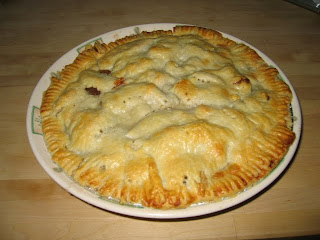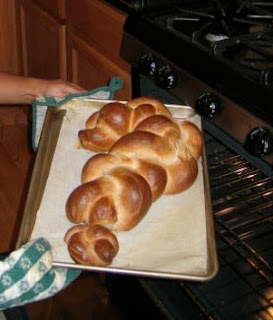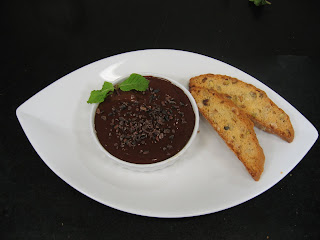Like so many others, this week, my husband and I vowed to start eating healthier, and for us, that means more legumes. He suggested I compile a sort of "five days of legumes" this week. We started with his black bean soup on Sunday, with green tomato salsa and chihuahua cheese quesadillas. I canned the salsa this summer, when it was clear it was not a good growing season for tomatoes in Chicago and about three varieties of heirloom tomatoes never went beyond being green. I was skeptical about the salsa when I canned it, but it's turned out to be a lifesaver this winter. He says his black bean soup changes every time he makes it, but I can safely say it's 1 15-oz can of black beans, one jalapeno (cored and finely diced), two to three cloves of garlic (minced), and a couple of roma tomatoes (coarsely chopped and juice included). He leaves the salt and peppering up to me, and I always throw in about a teaspoon of cumin and about a half teaspoon of chipotle or chili powder. Basically, he sautes the jalapeno and garlic together in a couple tablespoons of olive oil for about 5 minutes or until fragrant, and then throws in everything else. Heats it through to simmering (about 20 min), finishes it with the juice of one whole lemon and a smattering of chopped cilantro, and ladles it out in big bowls with the quesadillas on the side. Garnish with sour cream or extra chihuahua cheese. It's the Cinco de Enero (January) treat!
That same evening, he successfully followed my Yellow Dal recipe to a T, so he'd have lunches for the week. We eat this with purchased naan bread or just by itself. It totally warms the heart and makes you think of your favorite Indian restaurant on the first spoonful.
Yellow Dal
1 16-oz package yellow lentils (often called yellow split peas)
3 cups water
1 tablespoon salt
1 teaspoon sugar
1/2 teaspoon turmeric
1 teaspoon ground coriander
1 teaspoon garam masala
1 teaspoon cumin
1/2 teaspoon chili powder
4 tablespoons ghee (clarified butter) or vegetable oil
chopped fresh cilantro
Rinse lentils and drain them. Place lentils in heavy saucepan and add water. Bring to boil and then reduce to simmer uncovered, about 45 min, or until most of the water is cooked away and lentils are soft. Stir in salt, sugar, tumeric, coriander, garam masala, cumin, and chili powder. Combine well and heat through, another 5-10 min. Finish with ghee, mixing to coat. Serve with naan, chapathi, or rice. Serves 6-8.


























